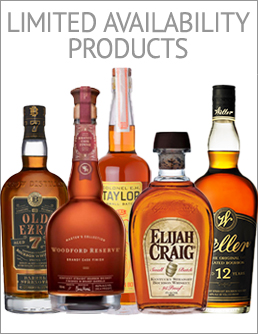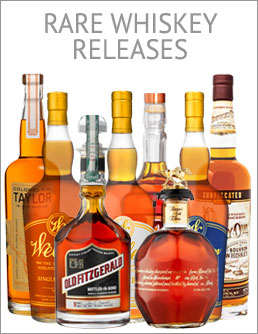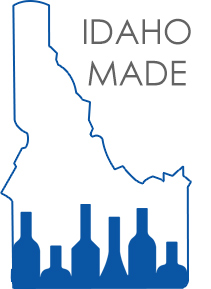Idaho State Liquor Division
 Do you enjoy entertaining at home? Is your home bar stocked and ready for a special occasion? We want to help you do so responsibly so you and your guests all have an enjoyable time. Under our Responsible Party Planning page, you’ll find great information on drinks per bottle, a link to a standard drink tool, and other great information to help you plan your social event.
Do you enjoy entertaining at home? Is your home bar stocked and ready for a special occasion? We want to help you do so responsibly so you and your guests all have an enjoyable time. Under our Responsible Party Planning page, you’ll find great information on drinks per bottle, a link to a standard drink tool, and other great information to help you plan your social event.
Listed below are the types of spirits on the market today. Additional information may also be found under each category header as you search for your favorite products. Don’t forget to stop on our Recipe page for seasonal and various cocktail ideas!
Brandy
 Brandy is a potable spirit, distilled from a fermented mash of grapes or other fruit. Most brandy is distilled from wine. White wine, made from white grapes, is used most often. Wine that has recently finished its fermentation process makes the best brandy. An aged wine, even if it is of superior quality, won’t make a good brandy.
Brandy is a potable spirit, distilled from a fermented mash of grapes or other fruit. Most brandy is distilled from wine. White wine, made from white grapes, is used most often. Wine that has recently finished its fermentation process makes the best brandy. An aged wine, even if it is of superior quality, won’t make a good brandy.
Brandies are produced wherever grapes are grown. Cognac comes from France, and Metaxa is from Greece. Brandies produced in California must be made from California grapes, and they have to meet rigid standards set by the distillers. California brandies account for over 75 percent of the brandy sales in the United States.
In many parts of Europe, brandy is made from fruit. Kirsch, from Germany, is cherry flavored, and Mirabelle, from France, has a plum flavor. To the brandy base, which contains the alcohol, they add an extract or concentrate of the fruit and sweetening syrups. The labels on fruit brandies must indicate the kind of fruit used, such as apricot brandy, cherry brandy, peach brandy, or blackberry brandy, etc. Almost all brandies are aged in oak barrels from three to eight years.
Cognac
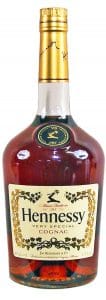 Cognac should be mentioned more specifically because it is the most famous of all the brandies. It is produced in the Cognac region of France, which is an area north of Bordeaux, bordering the Atlantic Ocean, with the city of Cognac near its center. The region is divided into seven districts, ranking in order of the quality of the cognac made in each district. In order, they are: Grande Champagne, Petite Champagne, Borderies, Fins, Bois, Bons Bois, Bois Ordinaries, and Bois a Terrior.
Cognac should be mentioned more specifically because it is the most famous of all the brandies. It is produced in the Cognac region of France, which is an area north of Bordeaux, bordering the Atlantic Ocean, with the city of Cognac near its center. The region is divided into seven districts, ranking in order of the quality of the cognac made in each district. In order, they are: Grande Champagne, Petite Champagne, Borderies, Fins, Bois, Bons Bois, Bois Ordinaries, and Bois a Terrior.
It is important to understand that all cognac is brandy, but not all brandy is cognac. A brandy may only be called cognac if it is distilled from wine made of the grapes that grow within the legal limits of Charente and Charente Inferieure Departments of France. Brandies distilled from wines other than these are not legally entitled to the name cognac, even though they may be shipped from the city of Cognac.
Gin
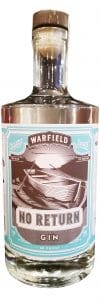 Gin is distilled from grain and receives its unique flavor and aroma from juniper berries and other botanicals. Every gin producer has his own special recipe, which is under strict quality control. The flavor of gin will vary with the distiller. Gin was first produced in Holland by Dr. Sylvius, a Dutch physician, during the 17th century. He named it Genievre, the French word for the juniper berry. It was the English who shortened the name to gin. Brought from Holland into England by English soldiers, who called it “Dutch Courage”, gin soon became the national drink of England and has so remained.
Gin is distilled from grain and receives its unique flavor and aroma from juniper berries and other botanicals. Every gin producer has his own special recipe, which is under strict quality control. The flavor of gin will vary with the distiller. Gin was first produced in Holland by Dr. Sylvius, a Dutch physician, during the 17th century. He named it Genievre, the French word for the juniper berry. It was the English who shortened the name to gin. Brought from Holland into England by English soldiers, who called it “Dutch Courage”, gin soon became the national drink of England and has so remained.
Gin can be made two ways, by either being distilled or compounded. All leading popular brands sold in the United States are distilled. Compounded simply means a mixture of neutral spirits with juniper berries. Distilled gin is distilled completely.
Virtually all gins in the United States use the word “dry.” You will see it on brand labels that may read, “Dry Gin,” “Extra Dry Gin,” “London Dry Gin,” or “English Dry Gin,” but they all mean the same thing‑‑lacking in sweetness. Originally, “London Dry” meant gin produced in London, but the name “London” is considered to be generic, and therefore it is often used to describe gins produced in the United States.
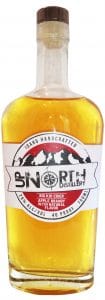 Liqueur
Liqueur
The words liqueurs and cordials are used interchangeably. Liqueurs were first developed by the Christian monks of the middle ages. They were developed to help the sick. The monks added secret combinations of honey, seeds, herbs, spices, roots, and bark to distilled-base spirits and offered them as remedies.
A liqueur is an alcoholic beverage made from a distilled spirit that has been flavored with either fruit, cream, herbs, spices, flowers or nuts. It is bottled with added sugars and other sweeteners such as corn syrup. Liqueurs are known to be quite sweet. Usually they are not aged for long once the ingredients are mixed. They could have resting periods during the production process which allow the flavors to mingle.
In the United States and Canada, where spirits are often called “liquor”, there is often confusion between liqueurs and liquors. Liqueurs generally contain a lower alcohol content (15–30% ABV) than spirits and it has sweetener mixed in, while some can have an ABV as high as 55%.
Rum
Rum is produced wherever sugar cane grows. Many countries, such as the United States, South Africa, and even Russia, produce rum, but it is only the Caribbean Islands that produce rum in quantities sufficient for worldwide export. The islands in the Caribbean each produce a distinctive type of rum, the result of the base material used, the method of distillation, and the length of maturation. Generally, the islands where the Spanish language is spoken, such as Puerto Rico, produce light, dry-tasting rums. The English speaking Caribbean islands produce dark, heavy-tasting rums.
 By definition, rum is any alcoholic distillate made from the fermented juice of sugar cane, sugar cane syrup, sugar cane molasses, or other sugar cane by-products, distilled at less than 190 proof, that also possesses the taste, aroma, and characteristics generally attributed to rum.
By definition, rum is any alcoholic distillate made from the fermented juice of sugar cane, sugar cane syrup, sugar cane molasses, or other sugar cane by-products, distilled at less than 190 proof, that also possesses the taste, aroma, and characteristics generally attributed to rum.
Sugar cane was brought to the Caribbean by Christopher Columbus on his journey from the Azores Islands. The climate was perfect for growing sugar cane, and soon it was being grown on every Caribbean island. The Spanish colonists who followed Columbus brought with them the art of distilling and began distilling the juice of the sugar cane into an alcoholic beverage, which became known as rum. Most authors believe the word “rum” is derived from the old words rumbullion (rumpus) or rumbustion (uproar), certainly appropriate words when referring to the first rum drinkers.
Rums can be broken down into various classifications. The light-bodied ones are dry and have only a very light molasses taste. They are available in two varieties: white, which is by far the most popular, and gold, which is a mixture of light and dark. The gold is sweeter and has a more pronounced molasses taste. The two favorite light rums come from Puerto Rico and the Virgin Islands. Another classification is heavy-bodied rums that are much darker and sweeter. They have a pungent bouquet and a heavy molasses taste. The dark rums differ because of slower fermentation and special maturation processes. Well-known dark rums come from Jamaica, Demerara, Martinique, Trinidad, Bermuda and New England.
Tequila
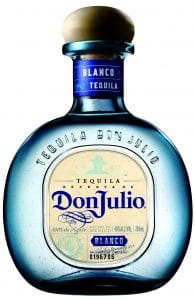 Tequila, the primary spirit of Mexico, has its own special flavor that is almost tart and leaves the tongue clean and tingling. In the 1970s, tequila became the fastest growing spirit in sales, as vodka did in the 1960s. Tequila is obtained from the distillation of the fermented juice (sap) of the mescal plant, called pulque. The only source for Tequila is the mescal plant, which is a species of the agave plant. It is a cactus that takes between twelve and thirteen years to mature. Its long leaves, or spikes, are cut off at harvest time, leaving only the bulbous central core, called the pina, meaning pineapple. The pinas, which weigh from 80 pounds to 175 pounds each, are taken to the distillery where they are cooked in pressure cookers for several hours. They are then cooled and shredded, and the juice is pressed out. The fermentation process is completed in huge wooden vats. The fermented juice is then twice distilled in traditional copper-pot stills.
Tequila, the primary spirit of Mexico, has its own special flavor that is almost tart and leaves the tongue clean and tingling. In the 1970s, tequila became the fastest growing spirit in sales, as vodka did in the 1960s. Tequila is obtained from the distillation of the fermented juice (sap) of the mescal plant, called pulque. The only source for Tequila is the mescal plant, which is a species of the agave plant. It is a cactus that takes between twelve and thirteen years to mature. Its long leaves, or spikes, are cut off at harvest time, leaving only the bulbous central core, called the pina, meaning pineapple. The pinas, which weigh from 80 pounds to 175 pounds each, are taken to the distillery where they are cooked in pressure cookers for several hours. They are then cooled and shredded, and the juice is pressed out. The fermentation process is completed in huge wooden vats. The fermented juice is then twice distilled in traditional copper-pot stills.
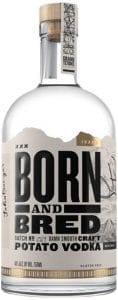 Vodka
Vodka
Like whiskey, vodka is distilled from a fermented mash of grain, but they differ in the methods of distillation. Whiskey is distilled at a low proof to retain flavor. Vodka, however, is distilled at a high proof, 190 or above, and then processed even further to remove all flavor. Most American distillers filter their vodkas through activated charcoal. Also, whiskey is aged, and vodka is not.
A few vodkas are made from potatoes. Most vodka is not. Almost all vodka is made from grain, the most common being corn, rye, and wheat. There are many countries that claim they invented vodka, among them Poland and Russia. Some historians claim the Poles were producing it as early as the 8th century AD, for use as medicine. It wasn’t until the 15th century AD, that both the Poles and the Russians were drinking it every day.
Whiskey
Whiskey is a spirit, aged in wood, obtained from the distillation of a fermented mash of grain. Whiskey is produced in four countries: the United States, Canada, Scotland, and Ireland. The whiskeys produced in Canada, Ireland, and Scotland take on the name of their countries. Whiskeys produced in other countries, even though they may taste similar, cannot legally be called Canadian, Irish, or Scotch.
Whiskeys vary in alcoholic strength, from 110 proof American bottled in bond whiskey, to 70 proof Canadian whiskeys, sold only in Canada. Most whiskeys sold in the United States are either 86 or 80 proof, depending on the distiller and brand. Prior to the 1960s, most whiskeys were bottled at a higher proof. Today, modern drinkers prefer lighter-tasting whiskeys. Federal law requires that the label on each bottle be plainly marked with the proof of the liquor. Proof indicates the amount of alcohol in any distillate, and represents 50 percent alcohol by volume. The term “proof” came out of the pioneering era of distillation. In the beginning, to determine the strength of liquors, distillers would mix equal quantities of the spirit and gunpowder and then apply a flame to the mixture. If the gunpowder failed to burn, the spirit was too weak; if it burned too brightly, it was too strong. However, if it burned evenly, with a blue flame, it was said to have been proved. Hence the word proof. Pure alcohol, like the kind used in laboratories, is 200 proof, being 100 percent alcohol. A combination of half alcohol and half water is scored as 100 proof or 50 percent alcohol. Proof is a measure of alcoholic strength, not necessarily of quality.
American Whiskey
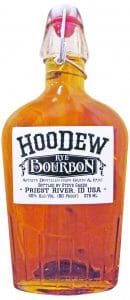 American whiskeys are rigidly defined by law, and governed accordingly. They include bourbon, corn, sour mash, Tennessee, blended, straight, bottled in bond, and rye. The history of American whiskey and America parallel each other. Whiskey was an integral part of everyday life in the Colonial days. It helped comfort the settlers during hard times and was enjoyed at the end of a rough day. It was also used to cure snakebite, ward off disease, and ease pain both superficially and internally.
American whiskeys are rigidly defined by law, and governed accordingly. They include bourbon, corn, sour mash, Tennessee, blended, straight, bottled in bond, and rye. The history of American whiskey and America parallel each other. Whiskey was an integral part of everyday life in the Colonial days. It helped comfort the settlers during hard times and was enjoyed at the end of a rough day. It was also used to cure snakebite, ward off disease, and ease pain both superficially and internally.
To be labeled as one of these, the whiskey must be distilled to not more than 80% alcohol by volume to ensure that the flavor of the original mash is adequately retained, and the addition of coloring, caramel and flavoring additives is prohibited. All of these except corn whiskey must be aged (at least briefly, although no minimum aging period is specified) in charred new oak containers. American corn whiskey does not have to be aged at all. But, if it is aged, it must be aged in used or uncharred oak barrels, at no more than 62.5% alcohol by volume . In practice, if corn whiskey is aged it usually is aged in used bourbon barrels.
Canadian Whisky
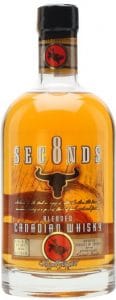 Canadian whisky is a type of whisky produced in Canada. Most Canadian whiskies are blended multi-grain liquors containing a large percentage of corn spirits, and are typically lighter and smoother than other whisky styles. When Canadian distillers began adding small amounts of highly-flavourful rye grain to their mashes, people began demanding this new rye-flavoured whisky, referring to it simply as “rye”. For the past two centuries, the terms “rye whisky” and “Canadian whisky” are used interchangeably in Canada and refer to exactly the same product, which generally is made with only a small amount of rye grain.
Canadian whisky is a type of whisky produced in Canada. Most Canadian whiskies are blended multi-grain liquors containing a large percentage of corn spirits, and are typically lighter and smoother than other whisky styles. When Canadian distillers began adding small amounts of highly-flavourful rye grain to their mashes, people began demanding this new rye-flavoured whisky, referring to it simply as “rye”. For the past two centuries, the terms “rye whisky” and “Canadian whisky” are used interchangeably in Canada and refer to exactly the same product, which generally is made with only a small amount of rye grain.
Historically, in Canada, whisky that had some rye grain added to the mash bill to give it more flavour came to be called “rye”. Although some Canadian whiskies are still labelled as “rye”, Canadian “rye” whisky usually contains high-proof grain whisky blended with lower-proof rye-grain whisky and Canadian-made “bourbon-style” corn whisky as flavouring. Occasionally barley whisky is also used for flavouring. Flavour may also be derived in other ways, such as flavour development from the aging process.It is a common misconception that Canadian whiskies are primarily made using just rye grain. The use of rye grain is not dictated by law and the primary grain used to make most Canadian whisky is corn. Canadian whiskeys’ are whisky blends. The most distinguishing characteristic of Canadian whisky is its light body.
Irish Whiskey
 Irish whiskey is one of the world’s great styles of whiskey. It’s most often triple-distilled from unmalted barley that is typically blended with grain whiskey, though there are single malts as well. Made entirely in Ireland, it’s a favorite worldwide, especially in the U.K. and U.S., due to its exceptional smoothness.
Irish whiskey is one of the world’s great styles of whiskey. It’s most often triple-distilled from unmalted barley that is typically blended with grain whiskey, though there are single malts as well. Made entirely in Ireland, it’s a favorite worldwide, especially in the U.K. and U.S., due to its exceptional smoothness.
Soley a product of Ireland, the rules for the production of Irish whiskey date back to 1880. There are two major components of the Irish Whiskey Act of 1950:
1. Irish whiskey needs to be distilled in the country of Ireland from a mash of malt and cereal grains.
2. Irish pot still whiskey can only be distilled in pot stills within Ireland from a mash of cereal grains that are ordinarily grown in Ireland.
By Irish law, all whiskeys must be aged a minimum of three years in barrels. They can be new or previously used and often once housed sherry, bourbon, or rum. The majority are blended whiskeys that include grain whiskey after barreling. Single malt whiskeys are found in the premium range. Irish whiskeys are typically bottled at 40 percent alcohol by volume (ABV, 80 proof) or slightly higher; some reach 120 proof.
Scotch Whisky
 Scotch whisky is malt whisky or grain whisky made in Scotland. Scotch whisky must be made in a manner specified by Scotish law.
Scotch whisky is malt whisky or grain whisky made in Scotland. Scotch whisky must be made in a manner specified by Scotish law.
All Scotch whisky was originally made from malted barley. Commercial distilleries began introducing whisky made from wheat and rye in the late 18th century.Scotch whisky is divided into five distinct categories: single malt Scotch whisky, single grain Scotch whisky, blended malt Scotch whisky, blended grain Scotch whisky, and blended Scotch whisky.
All Scotch whisky must be aged in oak barrels for at least three years. Any age statement on a bottle of Scotch whisky, expressed in numerical form, must reflect the age of the youngest whisky used to produce that product. A whisky with an age statement is known as guaranteed-age whisky. A whisky without an age statement is known as a no age statement (NAS) whisky, the only guarantee being that all whisky contained in that bottle is at least three years old.
The second type is single malt. A single malt Scotch comes from one distillery and made from only one malted barley. Single malt Scotches are expensive because they are made in limited quantities.
Bourbon
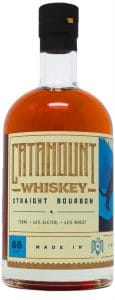 Bourbon whiskey is a type of American whiskey: a barrel-aged distilled spirit made primarily from corn. The name is ultimately derived from the French Bourbon dynasty, although it is disputed whether Bourbon County in Kentucky or Bourbon Street in New Orleans inspired the whiskey’s name.[1] Bourbon has been distilled since the 18th century.[2] The use of the term “Bourbon” for the whiskey has been traced to the 1820s, and the term began to be used consistently in Kentucky in the 1870s.[1] While bourbon may be made anywhere in the United States, it is strongly associated with the American South in general, and with Kentucky in particular. As of 2014, the distillers’ wholesale market revenue for bourbon sold within the U.S. is about $2.7 billion, and bourbon makes up about two-thirds of the $1.6 billion of U.S. exports of distilled spirits.
Bourbon whiskey is a type of American whiskey: a barrel-aged distilled spirit made primarily from corn. The name is ultimately derived from the French Bourbon dynasty, although it is disputed whether Bourbon County in Kentucky or Bourbon Street in New Orleans inspired the whiskey’s name.[1] Bourbon has been distilled since the 18th century.[2] The use of the term “Bourbon” for the whiskey has been traced to the 1820s, and the term began to be used consistently in Kentucky in the 1870s.[1] While bourbon may be made anywhere in the United States, it is strongly associated with the American South in general, and with Kentucky in particular. As of 2014, the distillers’ wholesale market revenue for bourbon sold within the U.S. is about $2.7 billion, and bourbon makes up about two-thirds of the $1.6 billion of U.S. exports of distilled spirits.
Reference: http://www.barschool.com/drink-recipes/liquor-dictionary
November 2014


